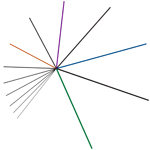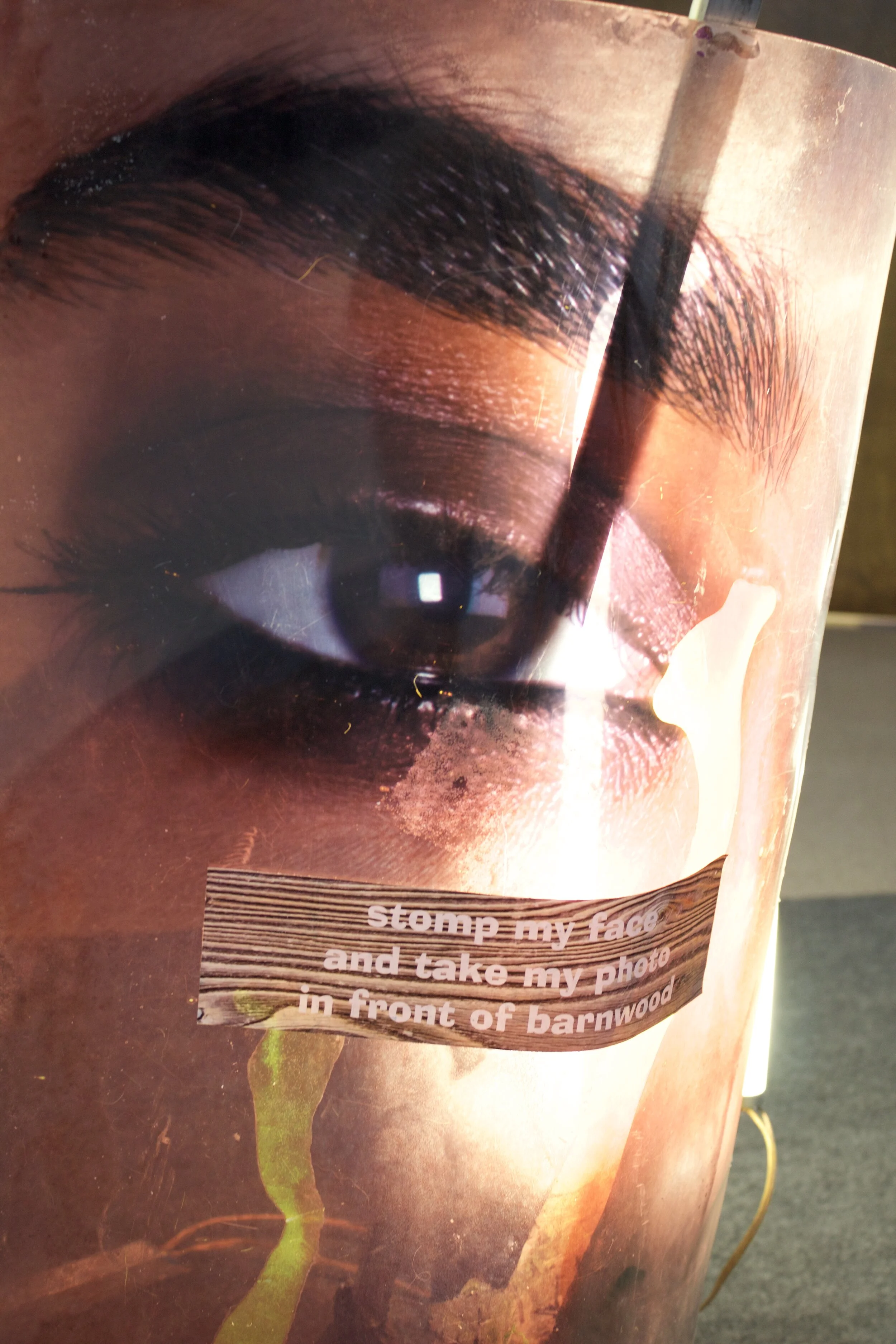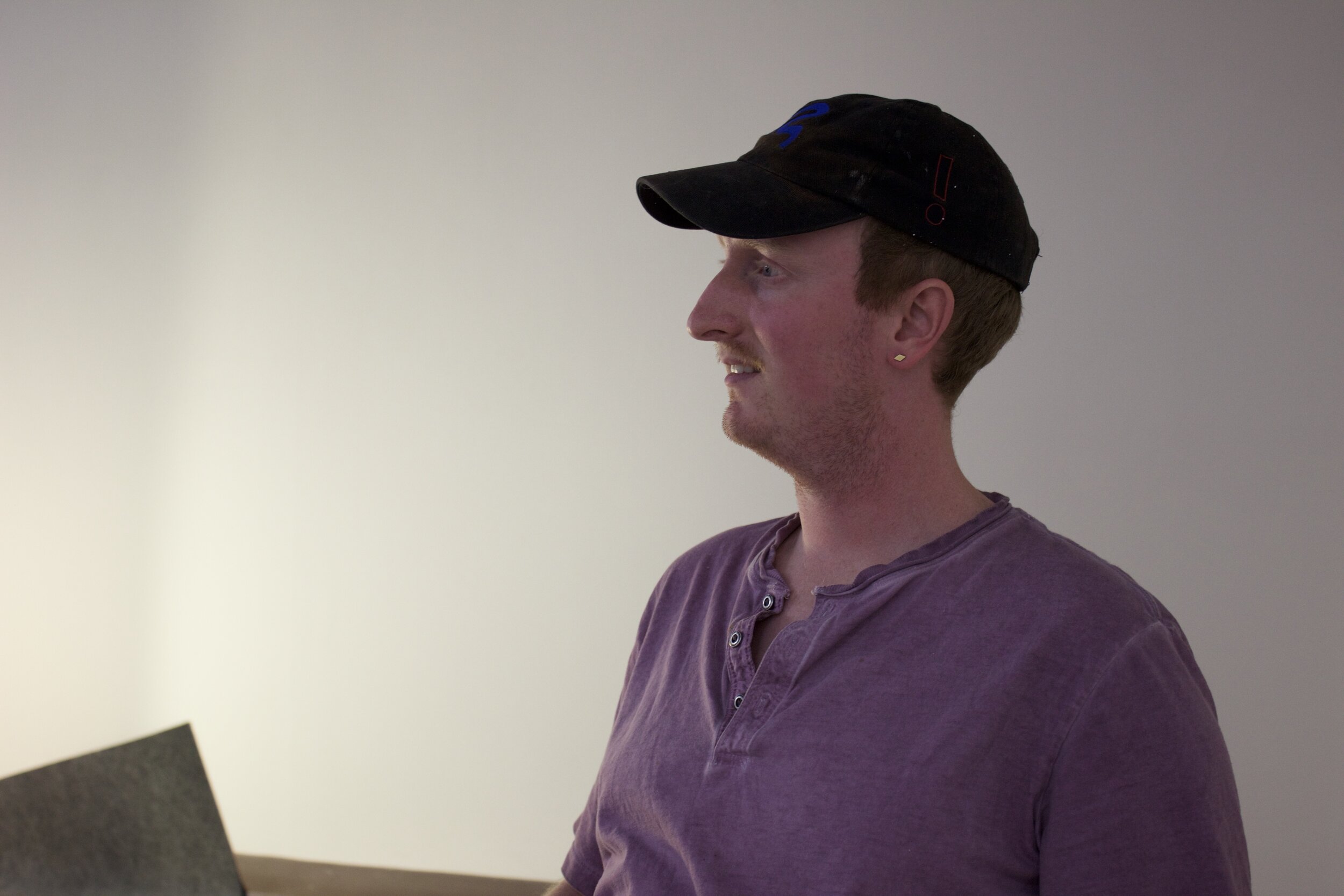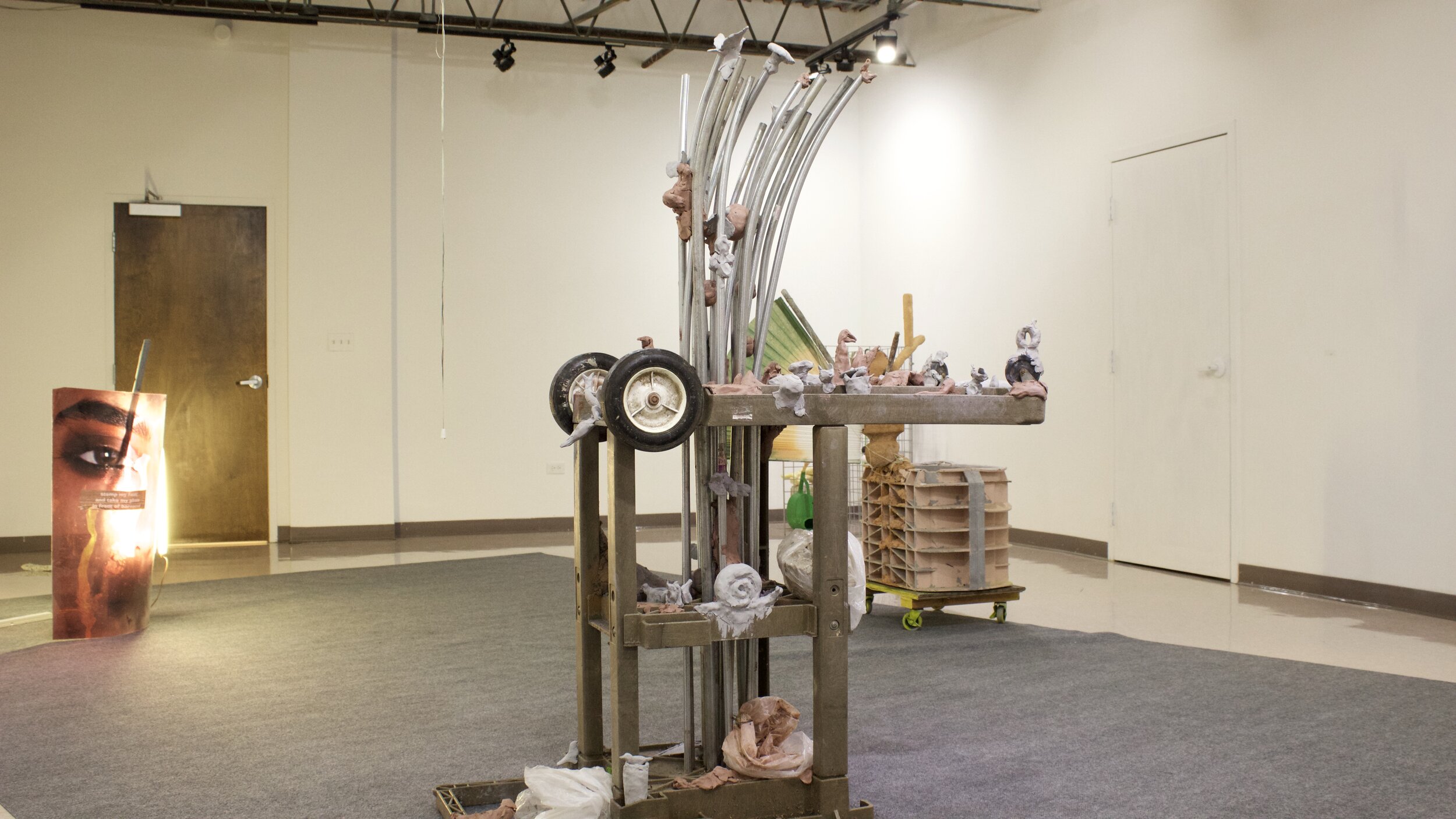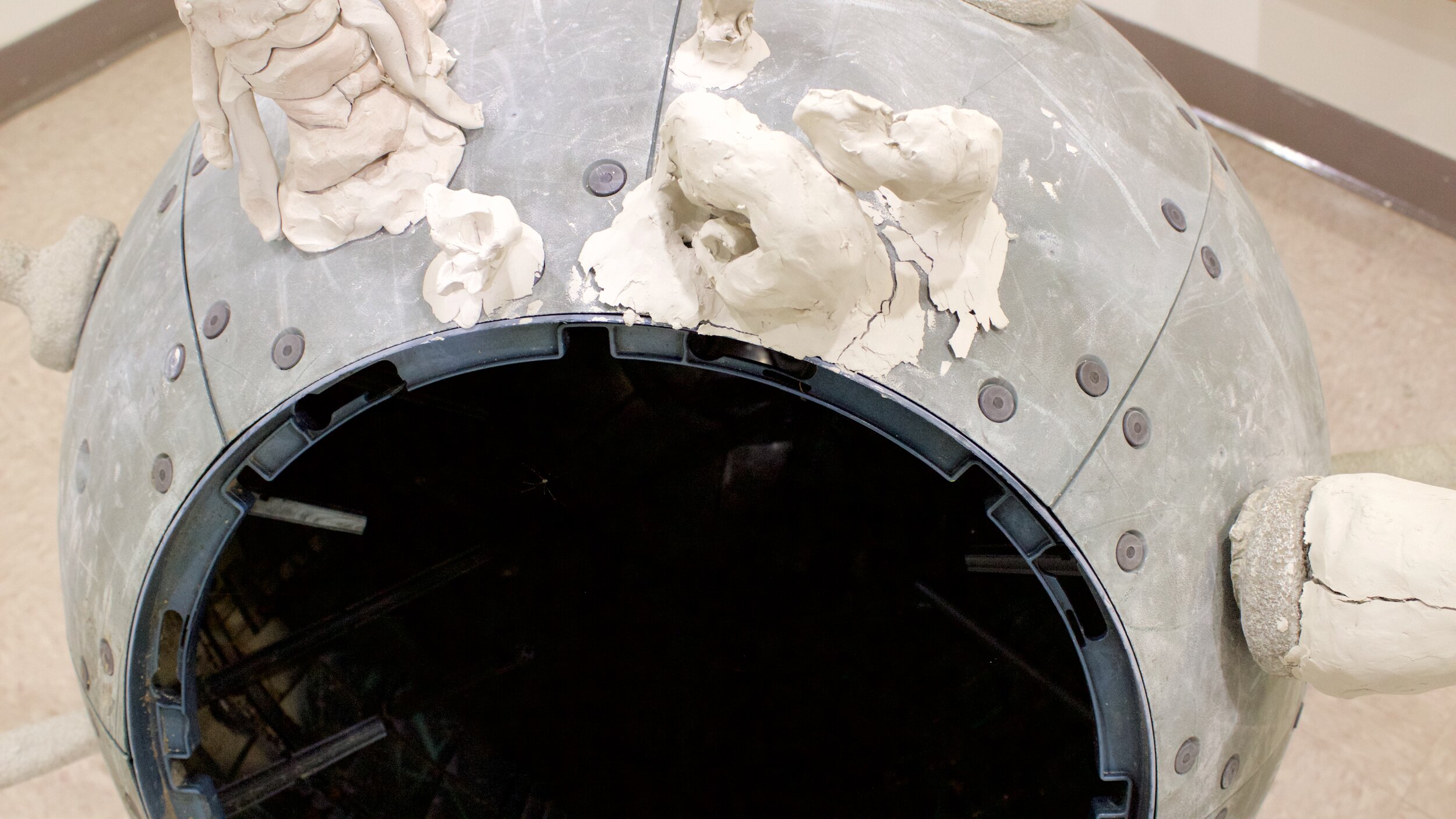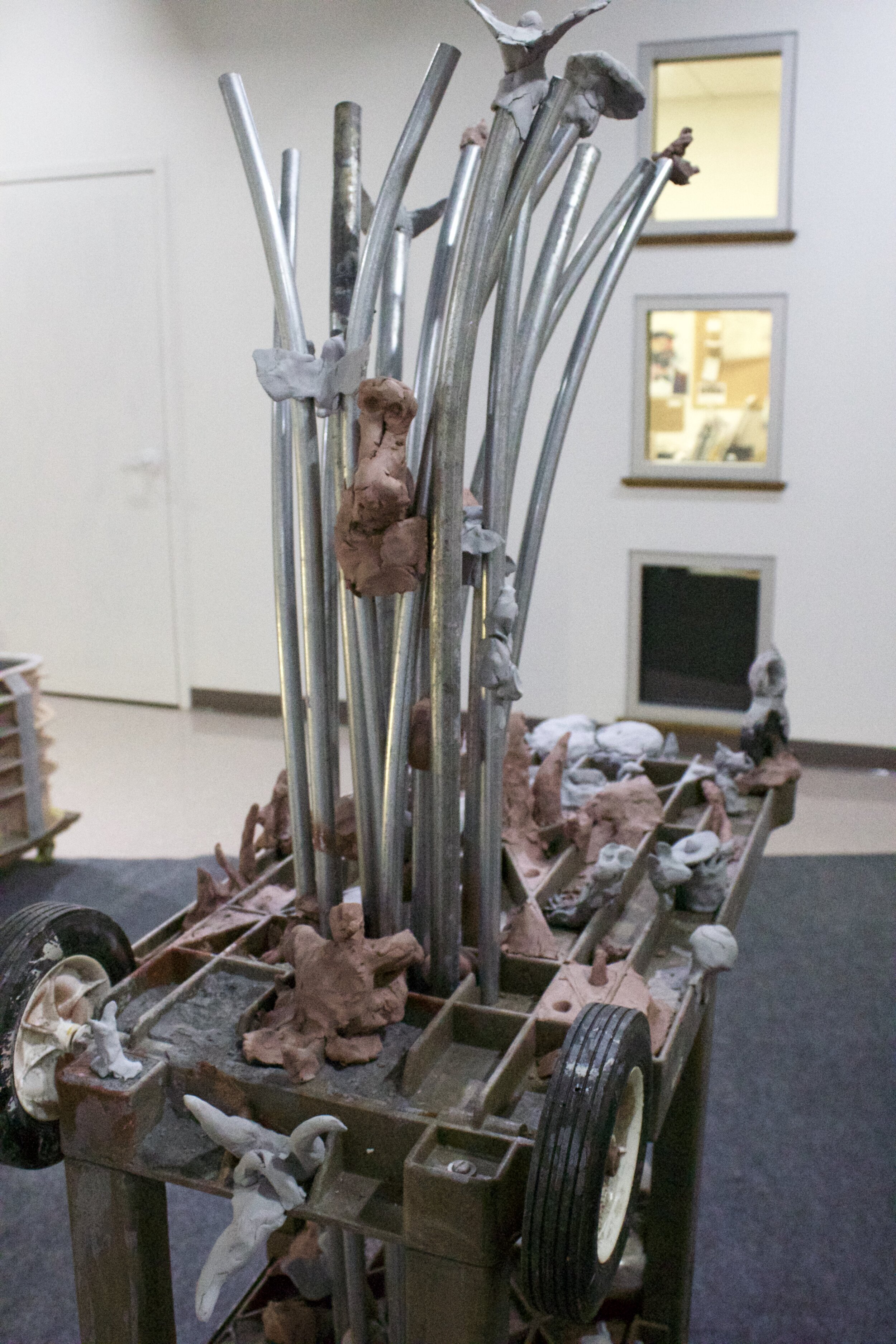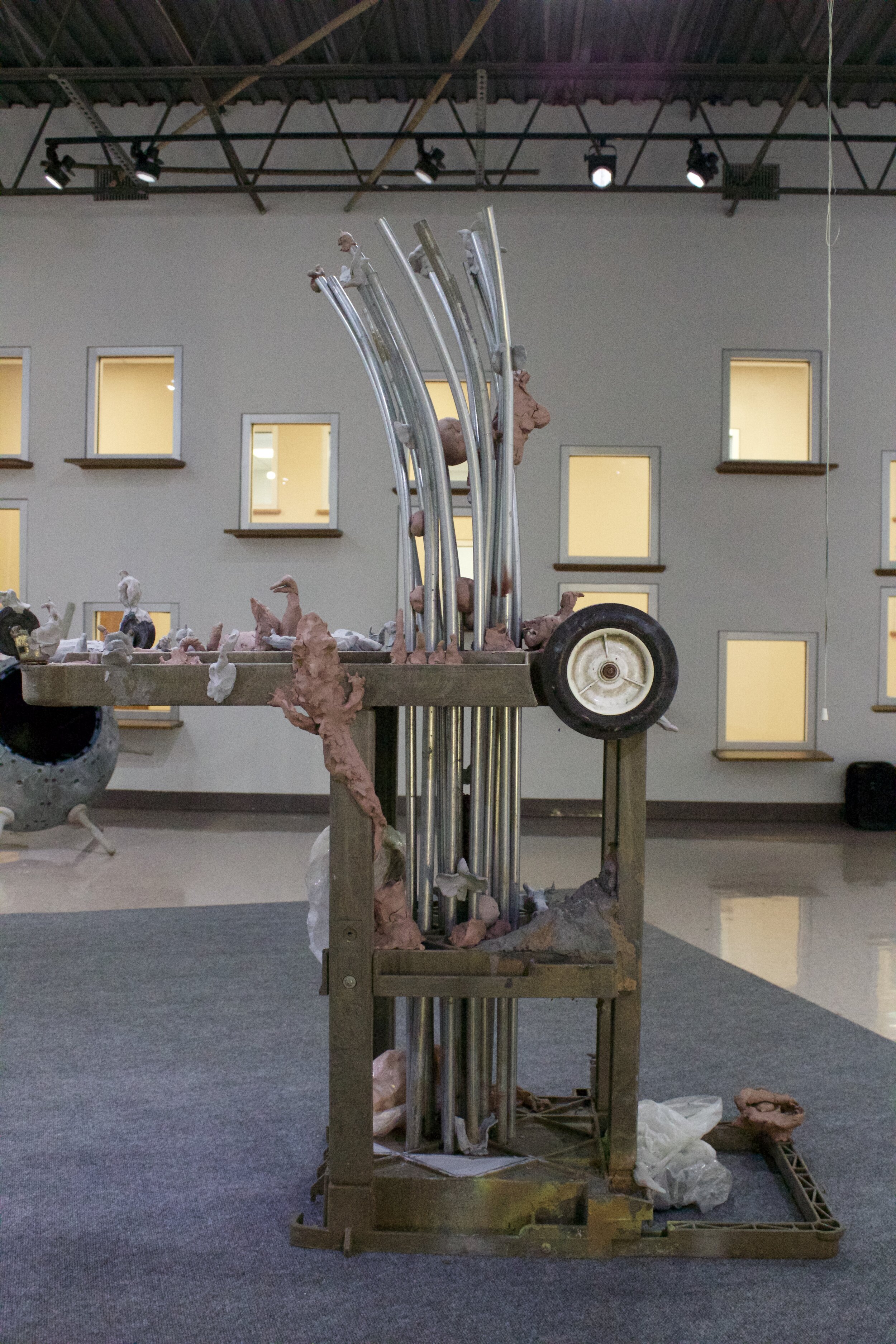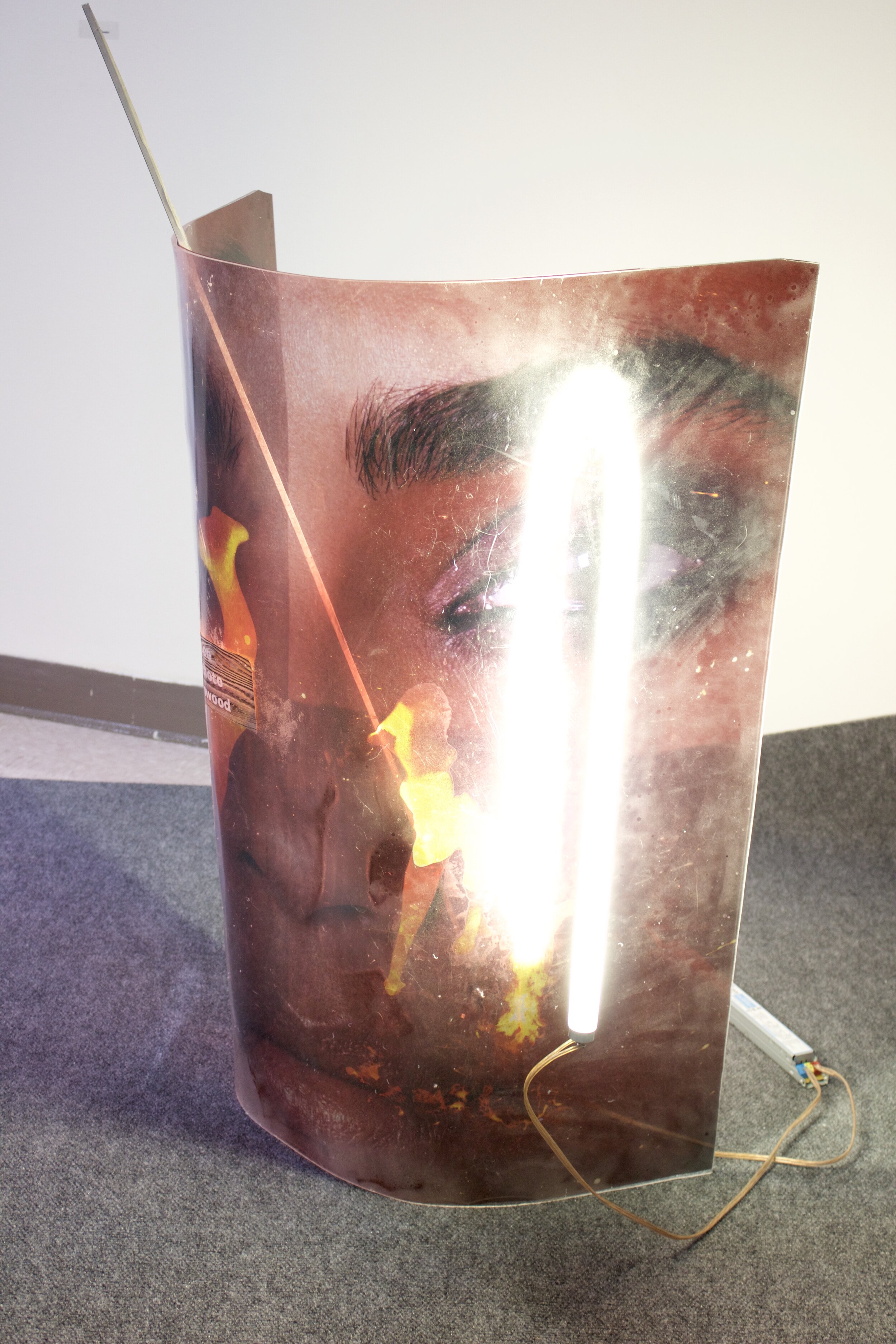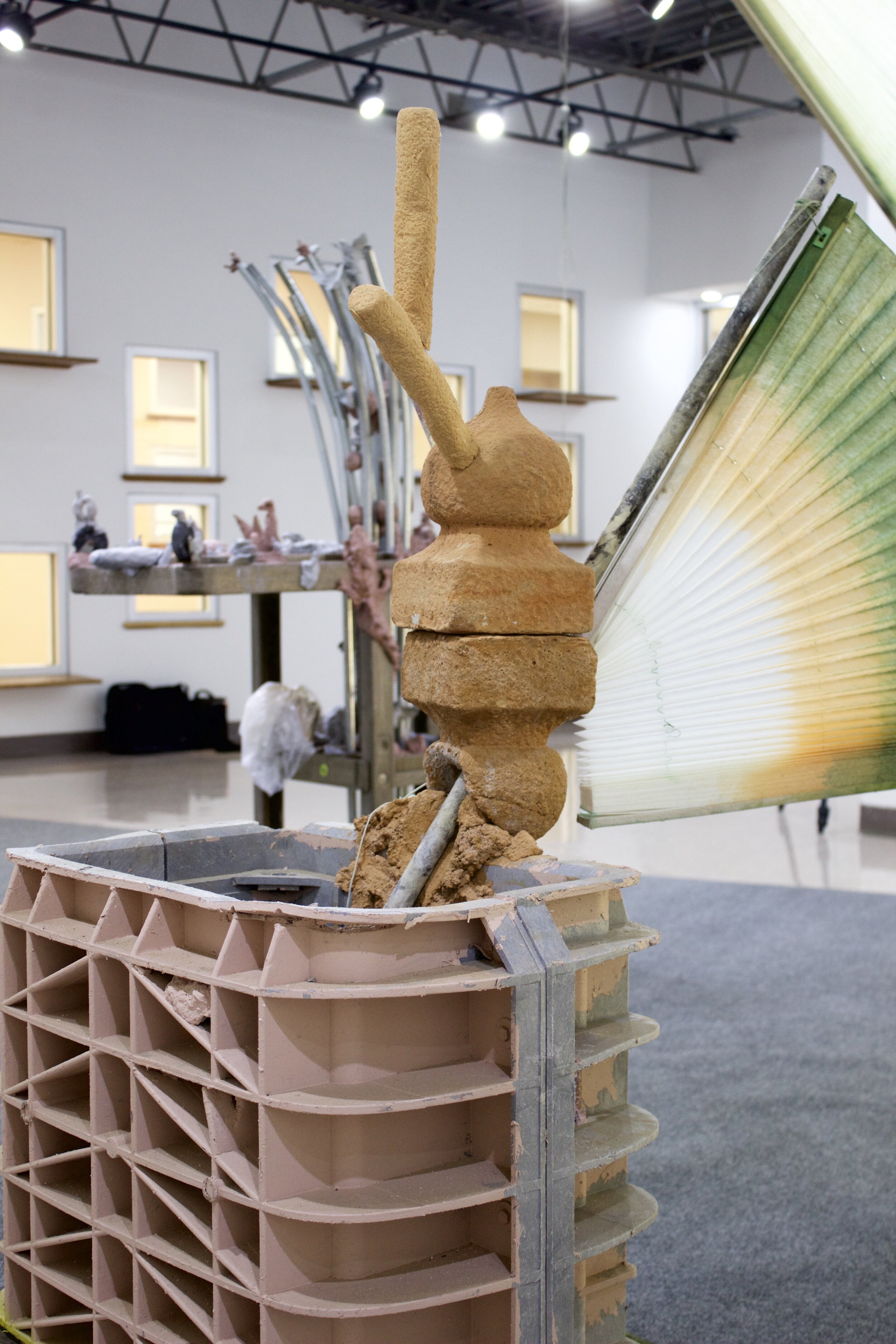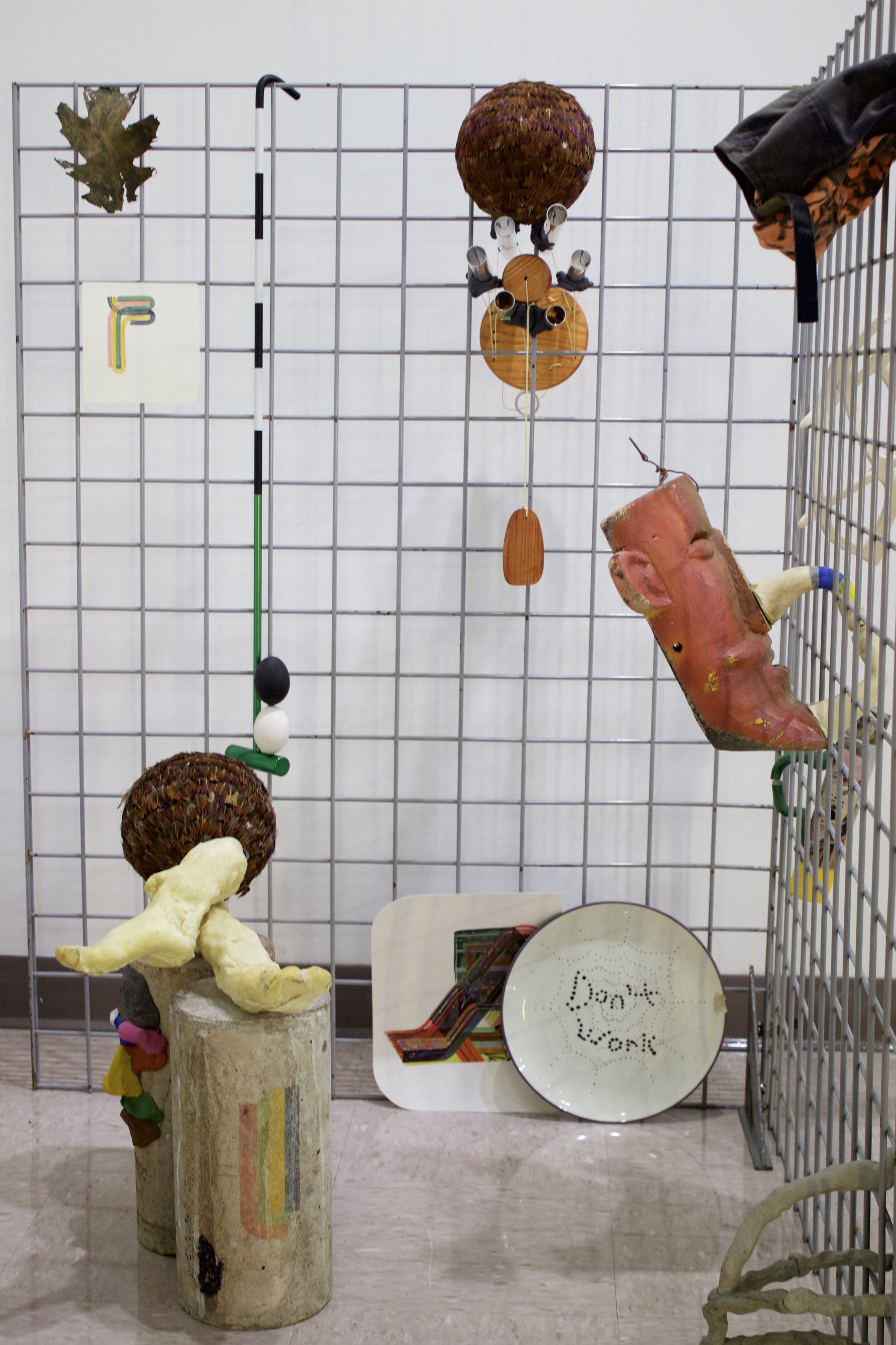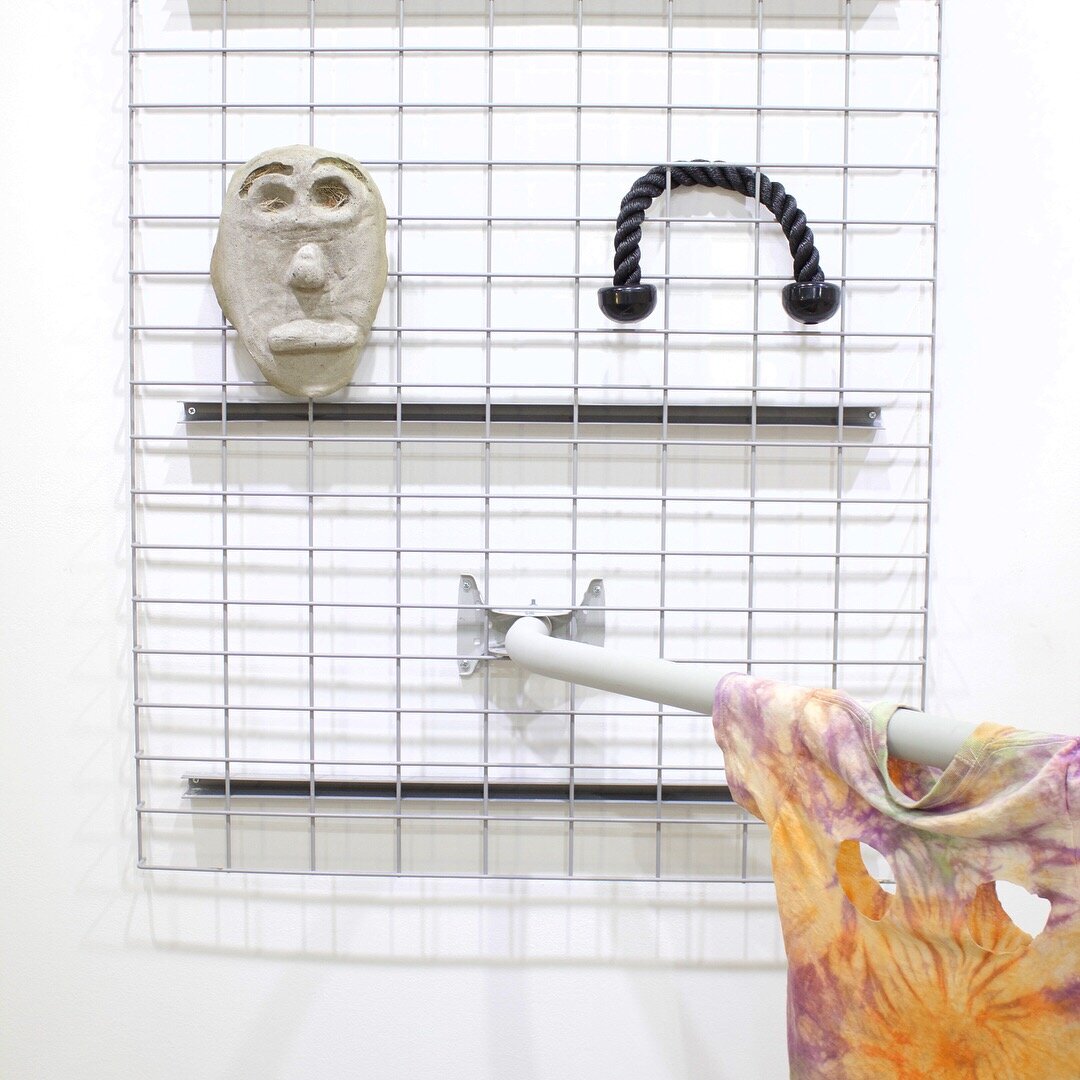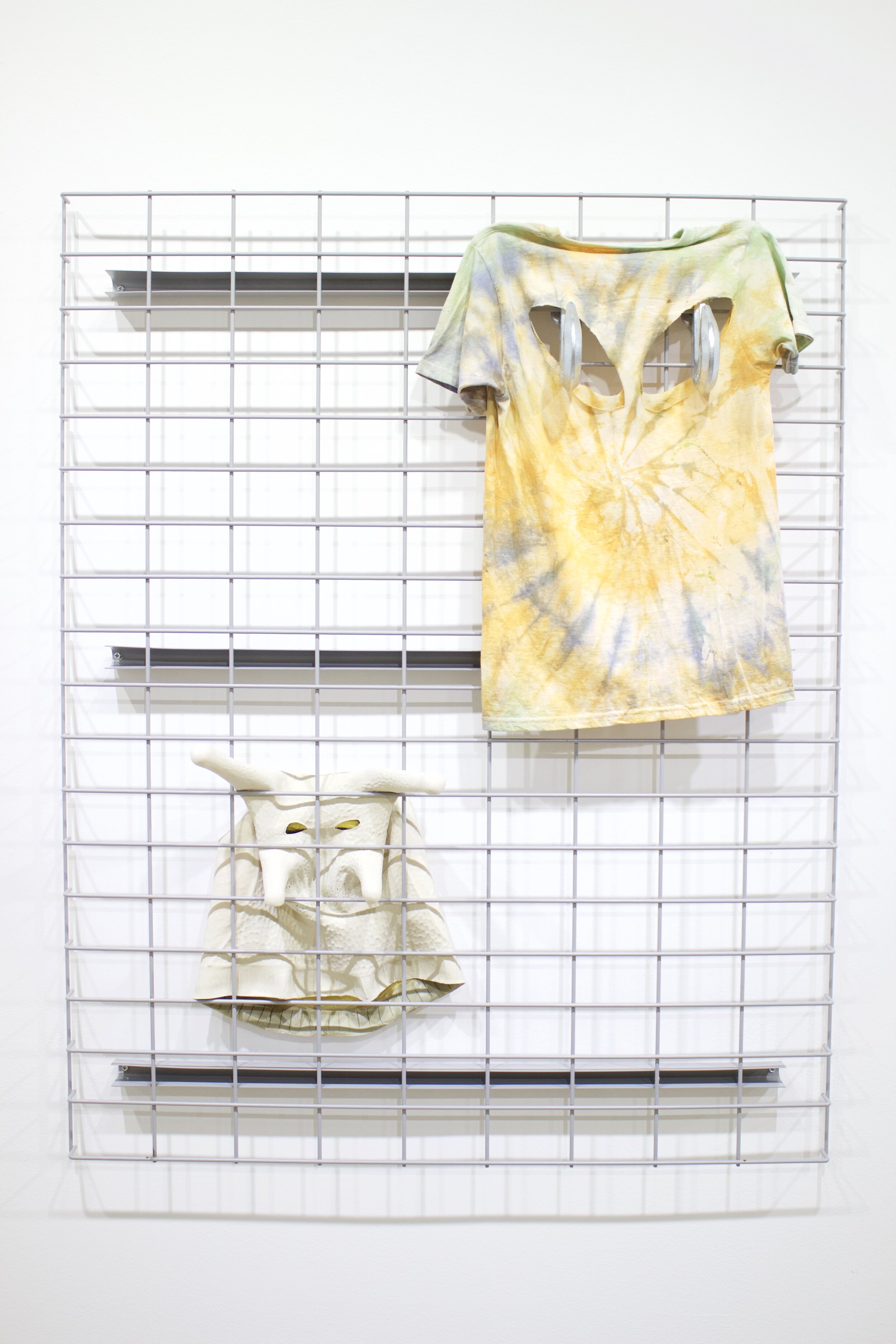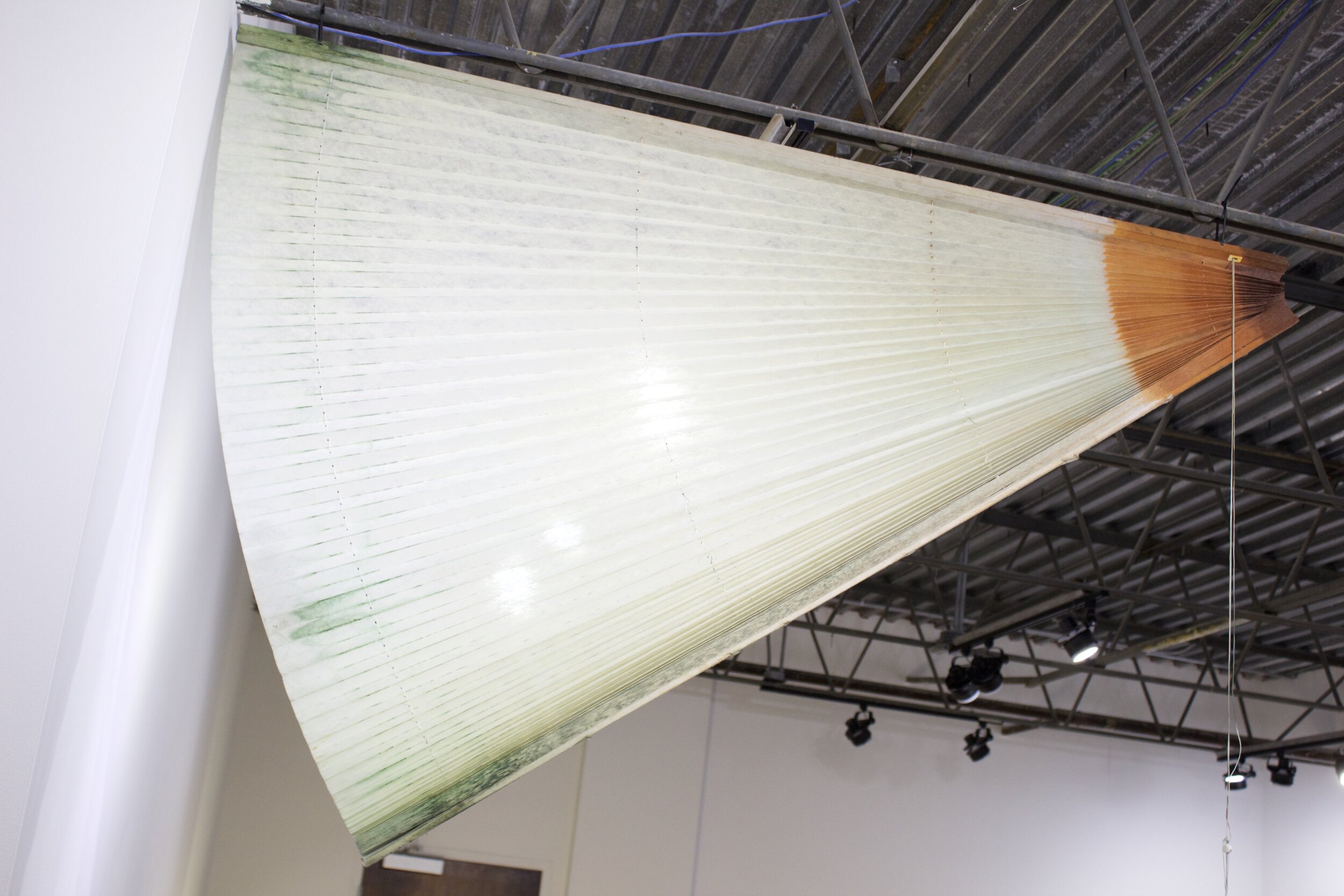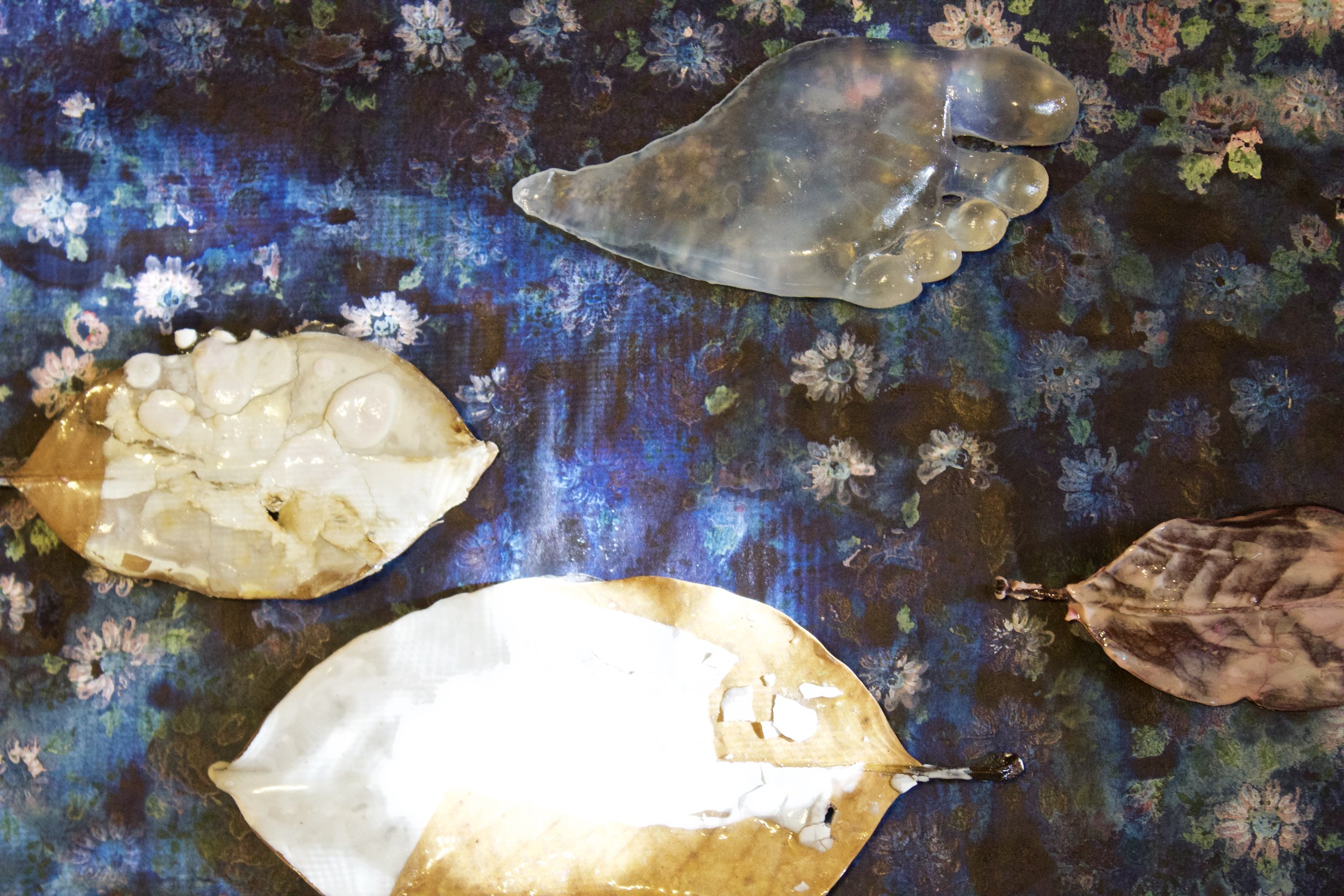Artist Austin Reavis describes finding motivation and materials to work with in his interview with Jonathan Lisenby at the site of flotsam, jetsam, lagan, derelict in Sewannee, TN.
Jonathan Lisenby: From looking at your studio setup, it looks like you use a wide variety of materials and employ painting, printmaking, sewing and sculpture - sometimes all in a single piece. How do you choose your materials?
Alexandra Jo Sutton: Exploration of materials is an extremely important part of my practice. When I get an idea for a piece/series/exercise, I often begin by experimenting with a wide variety of materials and see how the idea manifests itself in different ways with different mediums. Practical thinking, problem solving, and trouble-shooting are important as well. But my practice is very fluid and experimental by nature, so nothing is really off the table. I’m always playing with new ways to use things I’m familiar with, and how to incorporate new media. I think my open relationship with material is an important way that I continue to expand my visual vocabulary and build texture and tone in my work.
JL: How did you come to use the cyanotype technique that produces these blue-tinted prints? Is there specific meaning illustrated by this particular process?
AJS: The blue is the result of mixing traditional cyanotype fluid correctly. Blue is a very important color in my work (often signifying distance, desire/longing, physical and temporal separation, etc.) However, sometimes I’ll play with the mixture and formula to make the prints seem more green or yellow... the surface or ground for the cyanotype fluid is also experimented with... it pools, spreads, or bleeds differently on gauzy fabric than vintage wallpaper. This ties back into that experimental part of my practice and an intuitive response to material. The “specific meaning” behind using cyanotype is really about crystallizing the silhouette of one moment in time. The cyanotypes can take several minutes of exposure to capture an image, so I look at them like these documents marking a more tangible span of time than just taking a regular photo.
JL: Natural forms of detritus and cast-offs, like leaves, shells, twigs, and footprints find their way into your work. How do these visual symbols relate to memory and the ephemeral, in your more recent work?
AJS: I like to call these detritus objects “artifacts” because they each embody a history, and have somehow found their way to me. They are artifacts that embody a memory of their own past, their eventual journey into my studio (closed to me as the details of that origin may be). These objects are fragile, change over time as they die, shrink, warp, disintegrate, and are meant to maintain the ephemeral quality that all living beings share. In another way, many of these artifacts, like the Magnolia leaves, represent specific personal memories for me... pointing to different moments and sensations from childhood that are themselves shimmering fantasies of ephemerality. The cast hands and feet are more about the indexical... the marks that living things leave behind on their environment, that people leave within one another.
JL: Some of your resin and clay castings seem to explore the difference between a figure’s exterior and ‘interior’ - for example, the resin casts of your hands, and the clay casts of the space between your fingers. What is the relationship between these two modes?
AJS: As I mentioned before, I like to think about the indexical, impressions we leave behind as we move through time from birth to death. I started thinking a lot about fossils, trilobites, plants, extinct species, the hollow shapes of bodies found in Pompeii, etc., and how many different ways that bodies can take up space, or become cavities. I started playing around with shapes my open or closed body can make, positive/negative, exterior/interior, and using plaster, clay, and resin as a way to document those spaces.
JL: Instead of producing a single, rectangular image, like a traditional painting, you cluster sculptures and images on the wall or the floor. Sometimes you re-use the same sculptures and images in different configurations to make new pieces. What is your thought process when making this type of work?
AJS: My thought process is always based in creating visual relationships that express what I feel that I need to say in a given moment. When preparing for and installing an exhibition, there is a lot of intuitive responding to the exhibition space to accommodate for fluctuations in those visual relationships. I like to think of my studio practice as fluid, among materials, ideas, and that includes fluidity of presentation in an exhibition space. I also like to set up small, sometimes hidden moments in the work that it takes a few minutes to discover. By being flexible with how I curate the work, both myself and my audience are constantly able to see the things I make in new or different ways - just like how a memory may be an image of one moment in time, but that image changes each time we recall it.
